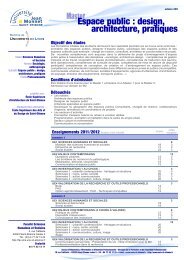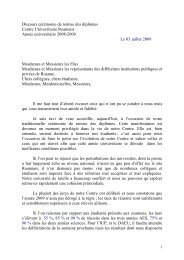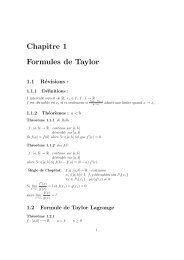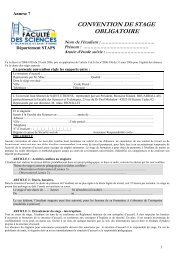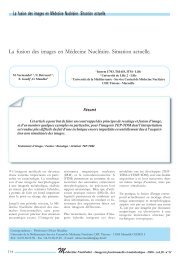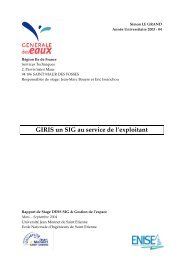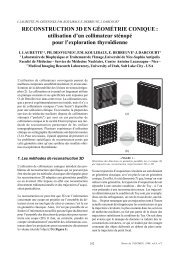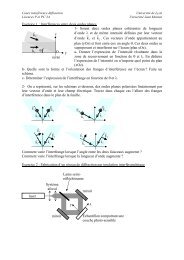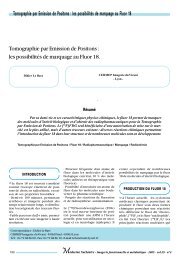Installation d'un TEP-TDM : réglementation, cahier des charges ...
Installation d'un TEP-TDM : réglementation, cahier des charges ...
Installation d'un TEP-TDM : réglementation, cahier des charges ...
Create successful ePaper yourself
Turn your PDF publications into a flip-book with our unique Google optimized e-Paper software.
<strong>Installation</strong> <strong>d'un</strong> <strong>TEP</strong>-<strong>TDM</strong><br />
Remerciements<br />
Les auteurs remercient A. Debono, M. Simonian et C.J. Benech pour leur aide documentaire.<br />
Installing a PET-CT :<br />
legal constraints, specifications, dedicated rooms and equipments<br />
To set up a PET-CT in France, is a long term (several months) process. The purpose of<br />
this paper is to <strong>des</strong>cribe what you have to do to get a PET-CT in working order. At first, it is<br />
necessary to abide by the legal constraints related to use of non sealed radioactive sources (a lot of<br />
them were recently modified) and to take into account the features of this new imaging method<br />
(high energy of photons – RX generator). The specifications of PET-CT should be written in<br />
close agreement with all of the medical staff that will use this imaging system (selection of PET-<br />
CT <strong>des</strong>ign, number of workstations, type of imager(s), data storage...). Works that will be executed<br />
in the examination room (PET-CT) and preparation room (patients in rest position) must be<br />
planned in accordance with the radiation safety constraints. In addition, among the accessories<br />
that must be purchased, the first one is a dedicated FDG ventilated shielded glove box. In conclusion<br />
the main documents to collect in order to obtain the French official authorization of PET-CT<br />
use are listed.<br />
PET-CT / Legal constraints / Specifications / Rooms arrangement / Equipment<br />
RÉFÉRENCES<br />
1. Fiche technique de radioprotection<br />
pour l’utilisation du Fluor-18. Cahiers<br />
de notes documentaires de<br />
l’INRS et de l’OPRI 1994; n°157: 509-<br />
510.<br />
2. Décret n°2003-296 du 31 mars 2003<br />
relatif à la protection <strong>des</strong> travailleurs<br />
contre les dangers <strong>des</strong><br />
rayonnements ionisants et modifiant<br />
le code du travail.<br />
3. Décret n°2003-270 du 24 mars 2003<br />
relatif à l’exposition <strong>des</strong> patients<br />
aux rayonnements artificiels.<br />
4 Décret n°2003-462 du 21 mai 2003<br />
relatif aux dispositions réglementaires<br />
<strong>des</strong> parties I, II, III du code de<br />
la santé publique.<br />
5. Directive EURATOM 96-29 du 13<br />
mai 1996 (travailleurs et public).<br />
6. Directive EURATOM 97-43 du 30<br />
juin 1997 (patients).<br />
7. Note OPRI-S2I.<br />
Annexe :<br />
Sous-Direction <strong>des</strong> activités radiologiques<br />
et biomédicales de la DGSNR<br />
(9ème sous-direction) :<br />
10, rue Crillon - 75004 Paris<br />
(locaux de la Direction Régionale de<br />
l’Industrie de la Recherche et de l’Environnement<br />
- DRIRE - d’Ile de France)<br />
Tél. : 01.44.59.47.85<br />
Fax : 01.44.59.47.84.<br />
188 Médecine Nucléaire - Imagerie fonctionnelle et métabolique - 2004 - vol.28 - n°5



